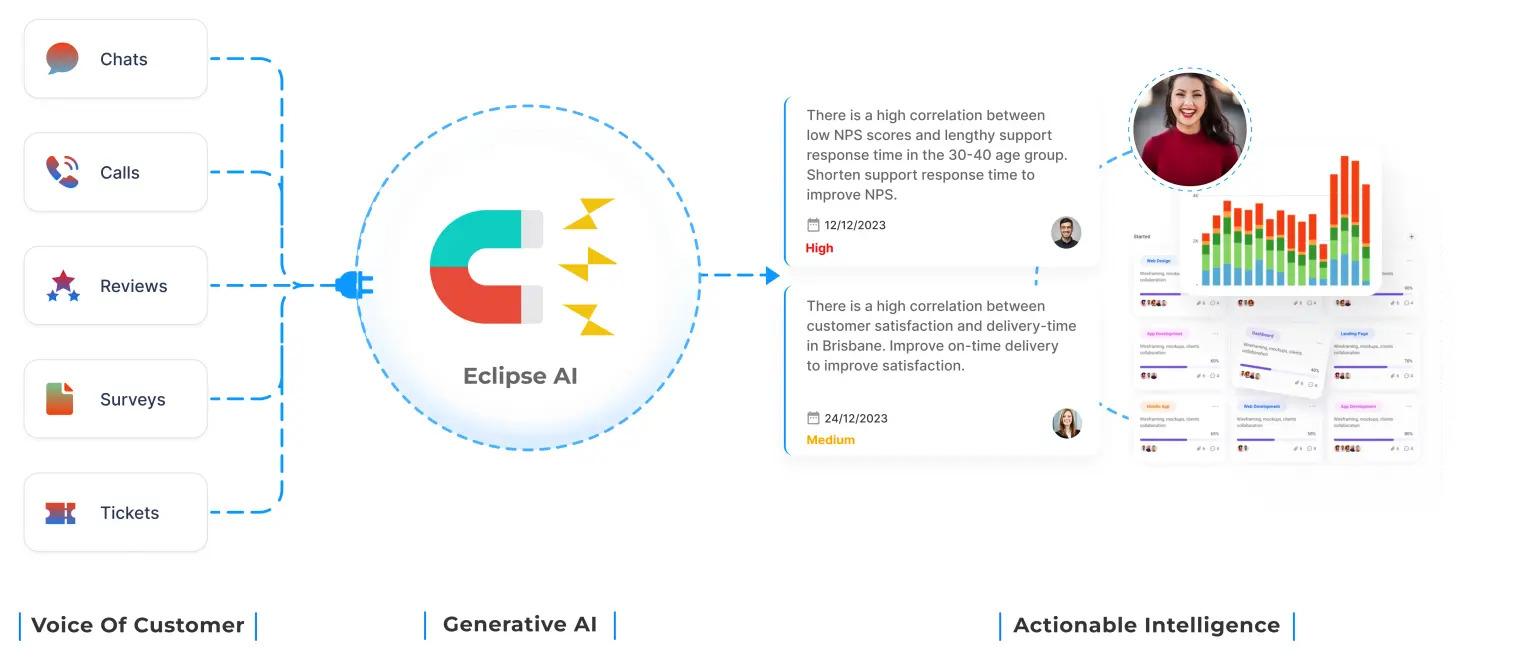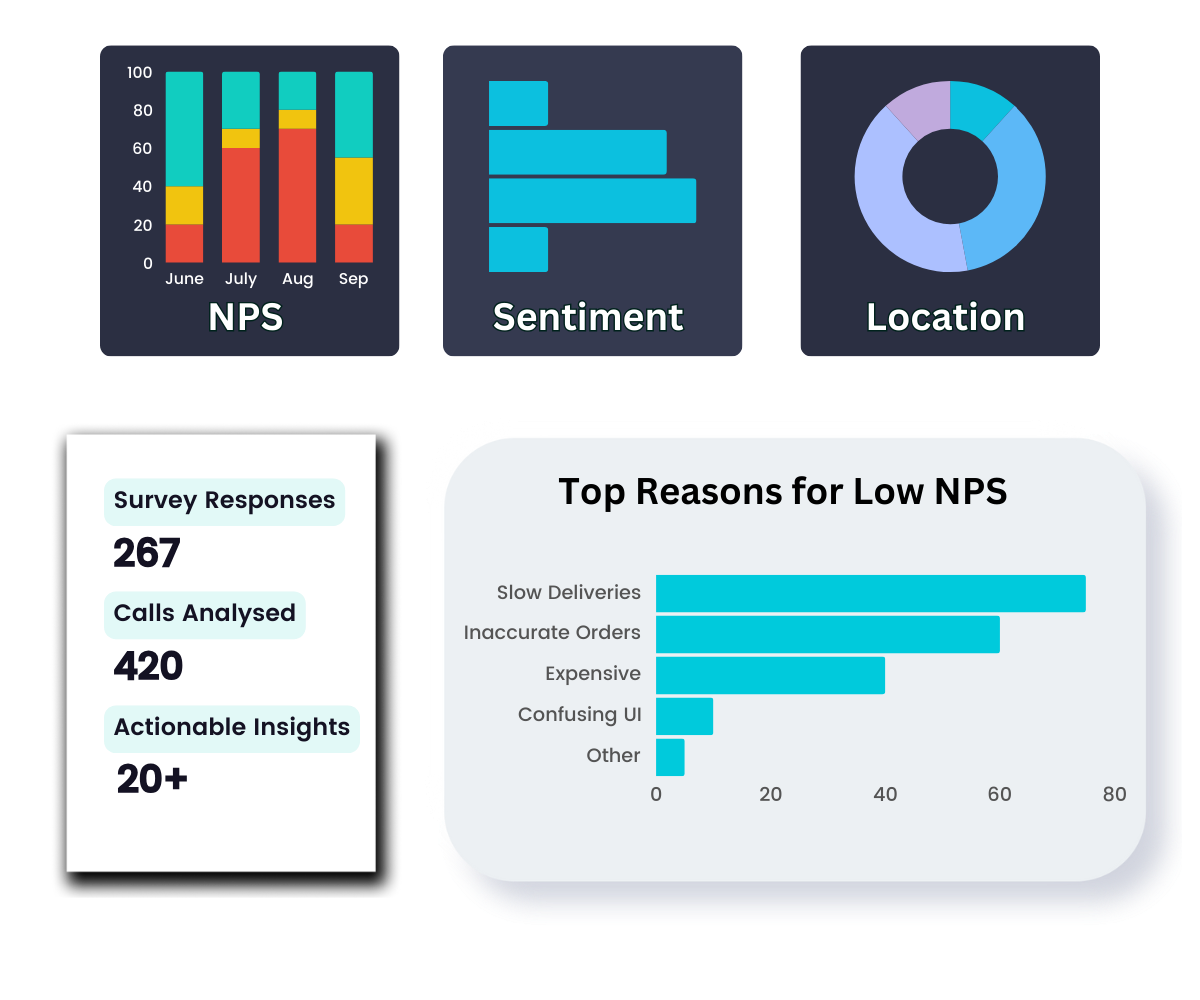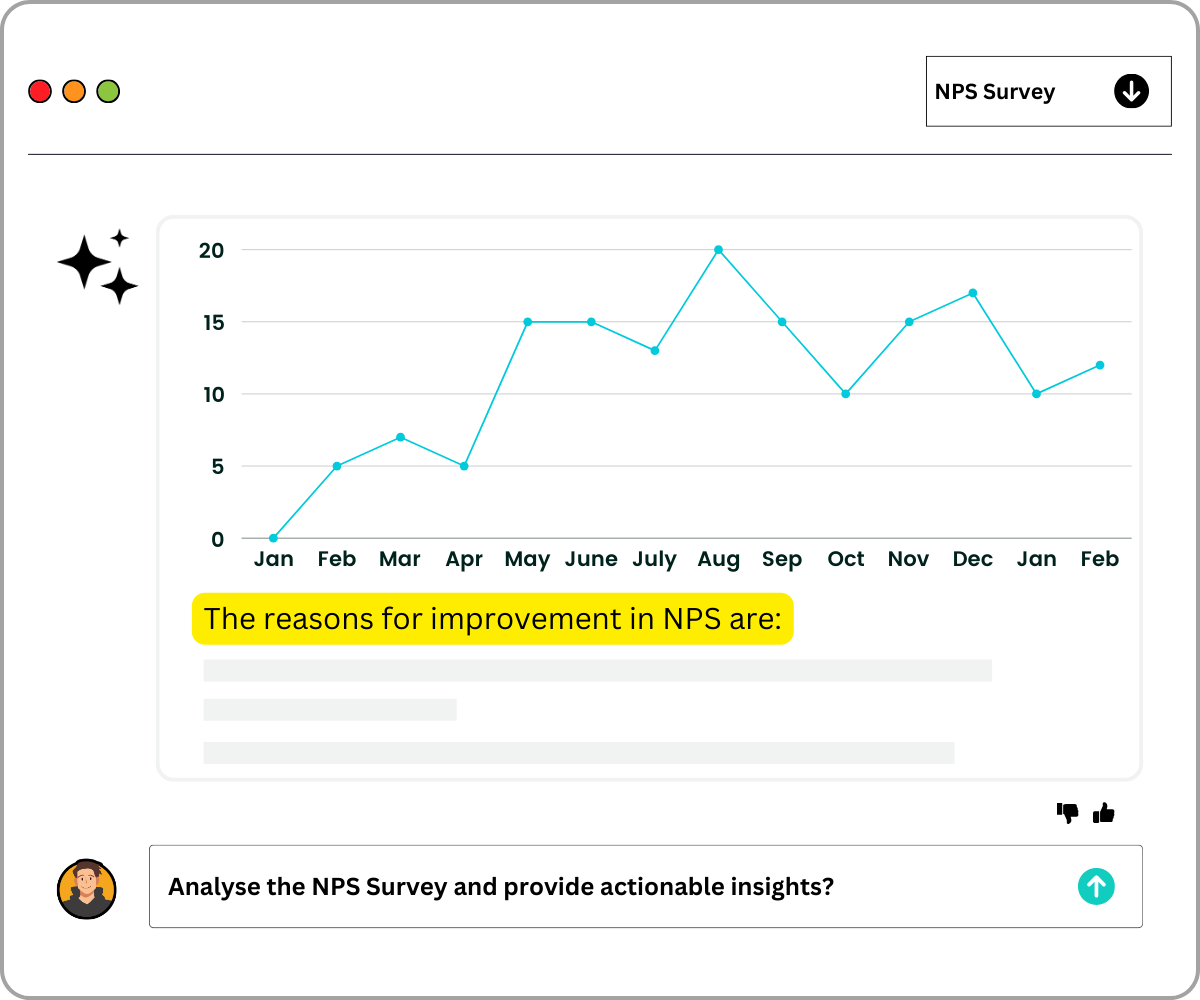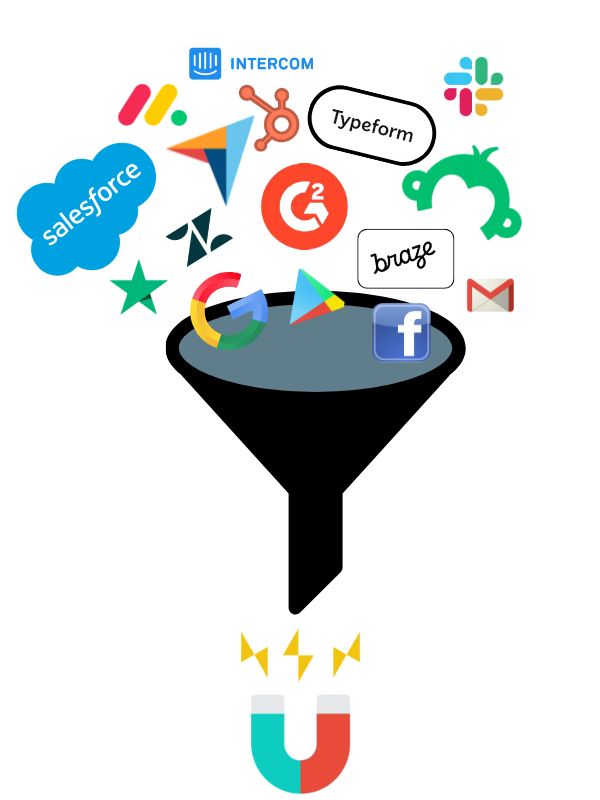Turn Customer Feedback Into Actionable Insights
Seamlessly collect all your customer feedback in one AI-powered customer feedback analytics platform. Say goodbye to siloed data and manual work.
- Unify customer feedback in one platform
- Discover key trends and opportunities
- Get AI-powered insights to improve CX
- No credit card required
- Save hours of analysis
- Boost customer loyalty




Eclipse AI enables the leading brands to make data-driven customer decisions
How Eclipse AI drives value from customer data
Unify your customer data
Seamlessly connect all your data sources into one centralized AI-powered platform for a complete, 360° view of your customers
Eclipse AI has helped us unify customer review data from 130+ franchisees. It also generates valuable insights (based on AI analysis) which are being used by our marketing, ops, and training teams.
Gareth, Chief Marketing Officer, Traffic
Analyze with clarity
Unlock powerful dashboards to make data-driven decisions with confidence.
30-Day Free TrialThe Insights provided by the AI are saving us hours of analysis. They are always spot on and relevant to our clients.
Caitlin, Loyalty Zone

Get Actionable Insights
Eclipse AI analyzes customer data across multiple touchpoints to deliver real-time, customizable insights, highlighting pain points and opportunities for improvement.
The auto-generated analytics based on the submitted responses and the cross-co-relative analysis were insightful and helpful.
Emran, Heidelberg Materials


Chat with your data
Get instant answers from your customer data—ask questions and uncover real-time trends, insights, and opportunities with an intuitive, conversational interface.
Try For FreeWithout Eclipse AI
- Feedback is scattered, hard to consolidate.
- Manual analysis is slow, delaying decisions.
- Feedback isn’t linked to KPIs.
- Predicting customer behavior is impossible.
With Eclipse AI
- Feedback is unified, providing a clear view.
- AI generated actionable insights.
- Feedback links directly to KPIs.
- Customer behavior becomes predictable with insights.
Eclipse AI customer’s results after 1 year:
20+ hours/month
Time saved doing manual work
60%
Improvement in CX metrics
45%
Drop in Customer Churn
Eclipse AI customers achieve measurable improvements in customer experience within a year. How could your customer experience evolve?

Integrations
Seamlessly integrate with any feedback channel.
Utilize our CSV importer or API for seamless customer data integration.
Explore IntegrationsTransform feedback into actionable Insights
Collect customer feedback across all touchpoints Unify customer feedback in one platform Get AI-powered insights to improve CX
Book a demo with your data











